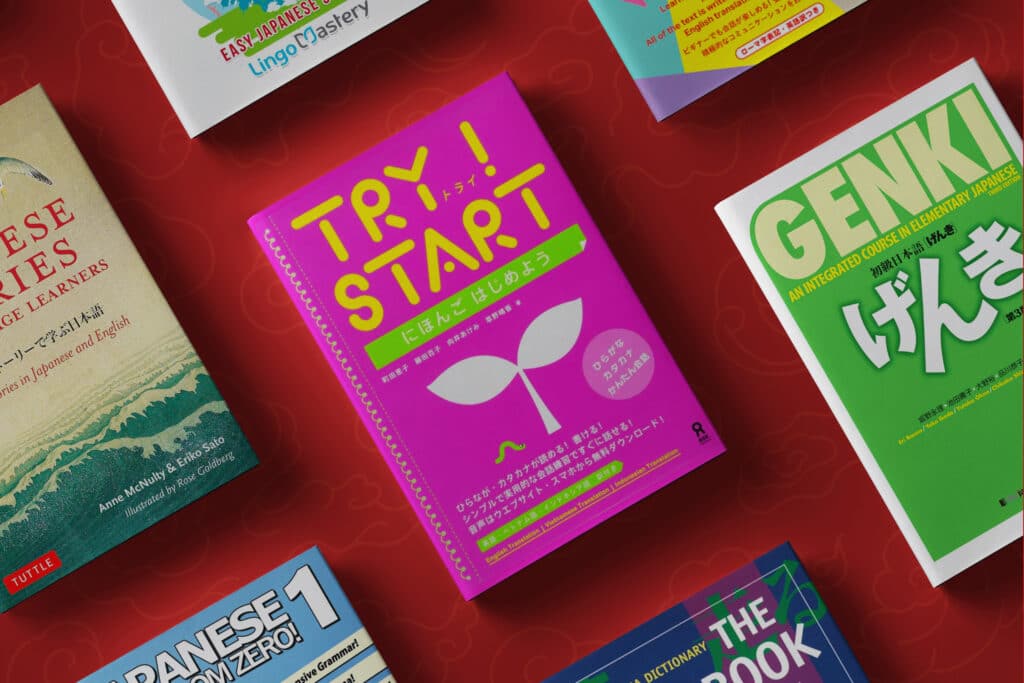
33 Best Japanese Learning Books for Beginners, JLPT Study and More (Tried and Tested)
It’s one of the most important Japanese learning decisions you’ll ever make.
Which Japanese textbook should you get?
Whether you’re a complete beginner to learning Japanese or you’ve got your sights set on taking the JLPT this year, it’s crucial that you find the right textbook for you.
In this post, I’ll give you the inside scoop on the best Japanese learning books for all levels and goals.
Contents
- Best Beginner Japanese Learning Books
- Best Intermediate Japanese Textbooks
- Best Books for Speaking Japanese
- Best Japanese Grammar Books
- Best Books to Pass the JLPT
- Best Books to Learn Japanese Vocabulary
- Best Japanese Dictionaries
- Best Books to Learn Kanji
- Best Bilingual and Parallel Japanese-English Books
- Where to Buy Japanese Textbooks
- And One More Thing...
Download: This blog post is available as a convenient and portable PDF that you can take anywhere. Click here to get a copy. (Download)
Best Beginner Japanese Learning Books
1. “Genki”
Check availability on: OMGJapan
Probably the most popular beginner option for learning Japanese, “Genki” books I and II have been around for years and are firm favorites in college “Introduction to Japanese” courses. There’s a good reason for the enduring popularity of this series: They’re well-written, easy to understand, affordable and comprehensive.
Pros:
- The series is popular, so there are lots of online posts and user experiences about them.
- Some extra materials online are free to use.
- Workbooks are available and are really useful for helping to consolidate learning without costing an arm and a leg.
Cons:
- They’re meant to be taught by a Japanese teacher in class and have many pair-work exercises, so they’re not always great for self-study.
- Answers are sold separately in an additional book and are all-Japanese with no translation available.
2. “Japanese from Zero!”
Check availability on: OMGJapan
Offering a less intimidating entry point to teaching yourself Japanese, this series has become really popular since its first publication in 2006.
Unlike most textbooks, no teacher is required and an active online community awaits those who want a more interactive approach. The series was written by a native English speaker and a native Japanese speaker, which means that different ways of thinking about language acquisition are considered.
Pros:
- The books are designed for self-study
- The interface of the books and web materials is intuitive and visually appealing.
- Supplementary materials are available to registered users on the YesJapan site.
- The cost point is significantly lower than a lot of alternatives.
Cons:
- No audio is included in the textbook, though there’s some in the supplementary materials you can view online.
- You have to pay extra to access some web content.
- The slower pace may frustrate busy adult learners with limited time.
- It’s less comprehensive than some of its counterparts.
3. “Living Language Japanese”
Check availability on: Amazon
In this Japanese series, traditional textbooks are combined with a set of audio CDs and online resources to create a comprehensive experience for learning all the basics of Japanese. The Living Language program prides itself on teaching adults new languages through in-depth instruction.
This is done through vocabulary lists, sample dialogues, lots of chances to practice as well as in-depth grammar explanations that don’t shy away from tough topics. Focus is placed on the essentials of the language, meaning that the vocabulary and grammar you’ll encounter are the most common features of everyday Japanese conversation.
Pros:
- Textbooks include CDs for speaking and listening practice.
- Price is reasonable considering the amount of material.
- Works well as a stand-alone course for those not enrolled in a formal class.
Cons:
- Can seem dated, at times definitely showing its age.
- Explanations and exercises are often dry.
4. “Pimsleur Japanese”
Check availability on: Amazon
Pimsleur is another well-respected language company that’s been around for years. Their method focuses on speaking and listening through audio, so it’s ideal for students who want to supplement other textbooks or coursework with extra listening and speaking practice.
By breaking down spoken Japanese syllable by syllable and providing authentic dialogue, you’ll get a feel for the natural flow of the language, enabling you to better understand and participate in Japanese conversation. The audio lessons give you a chance to speak out loud and actually use the language.
Pros:
- Excellent source of speaking and listening material for those who don’t have native Japanese speakers to practice with.
- Students quickly gain confidence through speaking and comprehension exercises.
- Level-specific packages or comprehensive sets are available.
Cons:
- On the more expensive side.
- Since it’s entirely focused on audio, there’s no exposure to Japanese reading or writing.
5. “Minna no Nihongo”
Check availability on: OMGJapan
Another major player for Japanese beginners is “Minna no Nihongo” (translated as “Japanese for Everyone”). This well-established textbook series has a really broad range of offerings.
The book introduces kanji from the beginning and although this may be a challenge, it pays great dividends and makes learning much faster as you move on. The all-Japanese format means that you’ll have to try harder to power through before checking the translation book, which will help you start thinking in Japanese sooner.
Pros:
- Answers to some activities are included in the back of the book.
- Presented entirely in Japanese for true immersion.
- The series has a very wide range of books, covering many skills like reading, writing, speaking and listening.
- Because there are so many books, there are many opportunities to practice and focus on the skills you especially need to master.
Cons:
- Knowledge of hiragana and katakana is a must before beginning this textbook.
- Intended to be used in a traditional classroom setting with a Japanese teacher guiding you.
- You may need to buy additional translation and grammar notes to get past the all-Japanese instruction.
- Multiple books for each level mean that buying the whole set of books can get quite expensive.
Best Intermediate Japanese Textbooks
6. “Tobira”
Check availability on: OMGJapan
Until “Tobira” was published in 2009 there hadn’t been a significant new textbook for intermediate learners for 15 years. The writers and publishers clearly worked hard to make a resource that was comprehensive, challenging and that supported learners trying to overcome the dreaded intermediate plateau.
Highly recommended by users for bridging the gap between low intermediate and advanced Japanese, this textbook covers all the language skills, including speaking and listening. The book introduces concepts in a thorough but approachable way, helping users to form an understanding of the language, rather than just memorize.
Pros:
- It’s comprehensive and logical in terms of contents and learning order.
- All skills are covered together, including speaking and listening.
- It’s designed for classroom usage but works well for independent learning, too.
Cons:
- It’s easy to get overwhelmed by the pace at which new kanji are introduced, especially when studying independently.
- You’ll need additional grammar and kanji books to really get the full experience, so the series gets expensive quickly.
- Big, heavy books make studying on the go impractical.
7. “Japanese for Busy People II”
Check availability on: Amazon
There are two versions of this textbook: One is written in romaji while the other uses kana. The kana version also includes supplementary kanji lessons at the end. This may put off some students, as the kanji has not been properly integrated nor contextualized for the corresponding lesson, which can be especially problematic considering that Japanese is a high-context language and culture.
However, compared to some of the other books in this post, “JfBP” is relatively cheap. Therefore, if you choose this book, you’ll be getting a classically-renowned learning guide at a low cost.
Pros:
- Great for learning Japanese in a short amount of time, especially for a tourist situation
- Teaches more complex grammar
- Puts vocabulary in its proper context
Cons:
- You need to buy a separate workbook for more exercises.
- It’s not as helpful for learning kanji.
- There’s an emphasis on work-related vocabulary instead of being diverse.
8. “Yookoso! Continuing with Contemporary Japanese”
Check availability on: Amazon
A well-known text in the area of Japanese language education, “Yookoso! Continuing with Contemporary Japanese” is used in many university classrooms around the world.
However, it’s not without its critics, especially of the newest 3rd edition. While updates include a supplementary CD and text written in softer font, others include dated pop culture references, and homework sections do not always correspond with the day’s lesson. On top of that, it’s quite expensive: a used book can run as high as $150. Many people suggest that an older edition will work just as well.
Pros:
- It takes an in-depth look at Japanese grammar.
- There are a lot of helpful cultural notes.
- You’ll pick up vocabulary for daily life.
Cons:
- There aren’t as many exercises on speaking and writing.
- It’s pretty expensive, with a hardcover copy ranging from $70 to $150.
- It covers less than 200 kanji.
Best Books for Speaking Japanese
9. “Shadowing: Let’s Speak Japanese!”
Check availability on: OMGJapan
As the name implies, this resource uses the shadowing technique to teach Japanese, which consists of speaking along with a native speaker and trying to match the speed, pitch and pronunciation.
These books’ main strength lies in their practicality: The example sentences contained in both are really useful in daily life. They’re great resources for perfecting pronunciation and learning to automatically speak common phrases in a natural way.
There are two main books available, covering beginner to intermediate and intermediate to advanced. In addition, a specialist book for job interviews is also available.
Pros:
- The books are good quality, well organized and include native speaker audio.
- The system promotes natural speed, rhythm, intonation and pronunciation.
- You’ll start speaking from day one.
- The technique employed yields excellent results compared to other speaking practice methods.
Cons:
- You need to speak out loud, so it’s not the best for studying in public.
- These textbooks are only good for speaking and listening—the texts don’t support any reading or writing practice, or grammar learning.
- Don’t monitor comprehension or place phrases in the context of longer speech.
- There are no quizzes or review exercises.
10. “Nihongo Active Talk”
Check availability on: OMGJapan
If your main goal is having conversations and making friends using Japanese, then “Nihongo Active Talk” may be just the ticket. It covers set phrases and beginner vocabulary and focuses on the application and comprehension of simple speaking and listening skills.
The book focuses on grasping grammar basics and applying them in conversation, helping learners study the concepts in context. And since it’s romaji-supported, you can dive right in even without any knowledge of Japanese reading.
Pros:
- Romaji-based instruction makes reading easier.
- Short and simple exercises mean you can quickly move on, keeping motivation up.
- Useful vocabulary lists will help you pick up new words and review them easily.
Cons:
- Romaji may discourage kana acquisition, which is essential for moving forward in your learning.
- The focus on conversational skills means it’s less comprehensive than other textbooks.
11. “New Nihongo Keigo Training”
Check availability on: OMGJapan
Keigo, or honorific Japanese, is used to show respect and to indicate one’s place in a hierarchy. It’s an essential feature of Japanese and mastering keigo can mean the difference between being able to work using your Japanese and upsetting a client or failing an interview.
There aren’t many resources specifically dedicated to the topic of keigo, so “New Nihongo Keigo Training” was a welcome edition when it was published in 2014.
Pros:
- Furigana throughout means that you can learn to communicate politely without Japanese kanji knowledge.
- It’s succinct—this book gets straight down to business!
- There’s a CD included and an audio download is available on the publisher’s page.
Cons:
- The minimal English explanations mean this book may not be appropriate for those totally unfamiliar with keigo.
- There’s limited assistance for speaking.
- Open-ended practice exercises may make it hard to assess the accuracy of your own answers.
- Pair work activities aren’t well-suited for solo learners.
Best Japanese Grammar Books
12. “Practice Makes Perfect”
Check availability on: Amazon
As the name suggests, this is a practice-based book. Students learn grammar through a series of interactive lessons that teach all the essentials.
Explanations of verb types, particles, clause modification and more are laid out plain and simple for the beginner. You’ll be able to work right in the book as you go through short lessons and exercises, perfect for even the most time-crunched language learners.
Takeaway:
- Suitable for beginners, easy to get yourself started and easy to understand.
- Exercises also cover phonetics, writing and other often-neglected areas of language learning.
- Usage dictionary included.
- Exercise-based approach helps students internalize grammar.
Cons:
- Kanji is introduced quickly and uses only romaji translations, not furigana, making it difficult to associate the kanji with the right sounds.
- Longer explanations for tougher topics could do with having more exercises.
13. “A Guide to Japanese Grammar”
Check availability on: Amazon
This book covers all of the essentials of Japanese grammar in explicit detail, from basic sentence enders to advanced topics like negative volitionals.
The prime focus of this book is to give the learner building blocks that they can use to create a solid foundation in their knowledge of all things Japanese grammar. Instead of starting from stock sentences using formal constructs and working backward (like most textbooks), Tae Kim presents Japanese grammar from the bottom up. This means you’ll learn the individual elements of grammar, as well as how to put them together to form more natural sentences than traditional textbooks teach.
Takeaway:
- Extremely detailed and comprehensive: covers grammar, writing, phonetics and more, with plenty of support and examples.
- Includes examples and vocabulary used by Japanese in the real world today, such as casual speech and slang.
- Great for checking grammar rules, this textbook can be used as a beginner reference guide as well as a textbook to work through from start to finish.
Cons:
- There are no listening exercises or audio support
- Practice exercises are open-ended questions, so they require someone with better Japanese than you to check for errors
14. “Japanese Verbs & Essentials of Grammar”
Check availability on: Amazon
This book covers all the essentials in 160 pages. It’s organized logically for easy reference and offers a good way for beginners to get up and running quickly.
Part 1 focuses on Japanese verbs, explaining their endings and forms, how to modify them and more. You’ll also get lessons on those pesky て and た forms, which are essential to advancing through Japanese grammar.
Part 2 explains various Japanese grammar points from the basics, such as particles, counters and conjugations.
Pros:
- Short yet comprehensive: all major grammatical concepts are included and explained, without the fluff.
- Suitable as a reference and includes tables that aid quick assimilation.
- Bonus audio material can be accessed online.
- Has section with cultural information.
Cons:
- The sheer amount of information can be overwhelming for beginners, so this is best used to reinforce learning.
- The book only uses romaji, no kana or kanji.
15. “All About Particles”
Check availability on: Amazon
Though Japanese particles can be rather tricky to master, they’re far from impossible to learn. All that’s required is a clear, concise guide to learn from—and that’s where this book is here to help.
This book offers thorough explanations on nearly 70 particles in the Japanese language, from basics like は and が to more complicated ones like だの and すら. Plenty of example sentences are provided to account for a variety of circumstances in which particles may appear.
Pros:
- Uses cross-references to explain when multiple particles can be used in the same situation.
- Good for all levels of Japanese learners.
- Focuses on building comprehension through context to allow for thorough understanding.
Cons:
- This is strictly a reference book, so there aren’t any exercises.
Best Books to Pass the JLPT
16. “New Kanzen Master JLPT N4: Grammar”
Check availability on: Amazon
One of a huge series aimed at those studying for the Japanese Language Proficiency Test (JLPT), this is an undoubtedly valuable resource for anyone studying Japanese grammar. The levels of these books correspond to the JLPT levels, ranging from N5 (easiest) to N1 (hardest).
I personally used the N2 version of this grammar book to study for the JLPT, and I was blown away by how thorough and easy to understand it was. Each grammar point is given a comprehensive explanation, detailing usage and limits for the terms.
Pros:
- Series available for all levels, beginners to advanced (JLPT N4~N1).
- Plenty of practice exercises with mock tests.
- Explains distinctions between similar grammatical phrases.
Cons:
- The JLPT focus means this is more of a review than a place to learn new grammar points.
- Explanations sometimes don’t go in-depth about each topic
17. “Try!” JLPT series
Check availability on: OMGJapan
The “Try!” series is specifically focused on students who intend to take the JLPT exam. The books strike a good balance between instruction, application and review of grammar and new vocabulary.
I found their grammar explanations to be sufficient without being so complex that I had trouble memorizing the main points. Plus, the examples are pretty close to what you might encounter in the real world, making it a valuable resource for seeing the application of the concepts you’re learning. The series worked well during lessons, as well as when I studied independently.
Pros:
- The fast “a to b” style is perfect for the JLPT, covering the basics in a succinct fashion.
- Contain good, simple grammar explanations with some examples as well as exercises and listening quizzes.
- The answers are included for easy self-assessment.
- The books come with accompanying CDs.
Cons:
- You may need further examples to get a sense of how to use grammar that doesn’t have an equivalent in English.
- Some grammar concepts are glossed over with brief explanations.
Best Books to Learn Japanese Vocabulary
A vocabulary book is not the same as a dictionary. Understanding when and how to write, spell and speak Japanese vocabulary is a complex thing, so vocabulary books exist to hold your hand a bit more than a dictionary would while learning.
Vocabulary books are meant to give you a good grasp of the words they teach, but to be able to actually use the words in conversations, you’ll have to take your learning beyond the book. Try to find real-world examples of the words in movies, shows and books and any other authentic Japanese content that you consume.
One way you can do this is by looking for each new term you learn in the language learning program FluentU.
FluentU takes authentic videos—like music videos, movie trailers, news and inspiring talks—and turns them into personalized language learning lessons.
You can try FluentU for free for 2 weeks. Check out the website or download the iOS app or Android app.
P.S. Click here to take advantage of our current sale! (Expires at the end of this month.)

A program like FluentU and a vocabulary book are key additions to your vocabulary learning arsenal.
18. “The Handbook of Japanese Verbs”
Check availability on: Amazon
The Japanese language revolves around verbs—their conjugations, modifications and placement within a sentence. As such, a book like this focused on verbs and their usage will come in great handy.
The book explains how verbs work and how they conjugate and relies heavily on exercises to ensure that students understand the material as they progress.
After breaking down Japanese verbs into their parts, you’re shown how they get mixed and matched with helping elements to convey a wide variety of meanings. Next, it shows how these verbs function in real Japanese sentences, with plenty of examples and practice questions to make sure that the meaning of each term is understood.
Pros:
- Excellent for beginners and intermediate students who want a solid understanding of verbs.
- Exercise-oriented approach makes it ideal for self-study or students who want hands-on practice.
- Book includes several appendices and methods for looking up verbs.
Cons:
- None, as far as I can tell!
19. “Japanese Vocabulary”
Check availability on: Amazon
This book organizes thousands of common Japanese words into categories. From basics like greetings and numbers to more specific terms like travel and shopping, it’s easy to create a study plan from this book, or focus on what’s relevant to you.
This resource is excellent for beginner and intermediate students who wish to focus on specific areas or supplement their own studies with vocabulary.
The pronunciation is given for every word, and if you need to find a certain word fast, there’s an easy-to-navigate section that lets you pick out the term you want, showing both English and Japanese meanings.
Pros:
- Very reasonable price.
- Small yet comprehensive.
- Topical organization lets students focus on particular areas as needed.
Cons:
- There’s no kanji or kana used in this book.
- Some of the words included are impractical for everyday use.
20. “Jazz Up Your Japanese with Onomatopoeia”
Check availability on: Amazon
Onomatopoeia is a huge part of Japanese but isn’t often covered in textbooks. This is really a shame, because Japanese onomatopoeia can be used to express all sorts of concepts, feelings, sounds and more that English doesn’t have words for—but I sure wish it did!
This book contains a huge variety of onomatopoeia, getting into the details of everyday Japanese so you sound more like a native. To help readers learn how they’re used in sentences, sample dialogues are provided in Japanese, with transcriptions in romaji and English translations.
Pros:
- Explains symbolism between sound and meanings of onomatopoeia.
- Written in casual, everyday Japanese to give an accurate sense of daily conversations.
- Offers cultural notes on certain nuanced points.
Cons:
- The Japanese and its romaji depictions are on different pages (instead of following each sentence), forcing you to keep looking back.
Best Japanese Dictionaries
21. “Kodansha’s Furigana Dictionary”
Check availability on: Amazon
This dictionary includes furigana—small hiragana written above kanji—to help students know how to pronounce words. This is a fantastic feature, as many dictionaries do not include the furigana readings of kanji. Students can learn kanji readings through the furigana as they navigate this dictionary, giving them a leg up in their studies.
Like the Random House dictionary, it’s divided into a Japanese-English and an English-Japanese section. The Japanese-English section is written in Japanese kana, not romaji. There are also notes on words that may be vague in meaning, with example sentences that show them in their correct contexts.
Pros:
- The Japanese-English section, ordered by kana, helps students learn the native Japanese kana order.
- Suitable for beginner and intermediate students.
- Example sentences are included with each entry.
- Compact and portable.
Cons:
- There’s no romaji at all, so no support for new learners.
- The furigana is in a very small font, making it difficult to read at times.
22. “Kenkyusha’s New Japanese-English Dictionary”
Check availability on: Amazon
This heavy-duty dictionary is the most thorough, in-depth dictionary on the market, packing a whopping 290,000 words.
Many entries have multiple sub-entries, allowing for precise definitions that allow you to understand the exact meaning of each word. Example sentences and detailed explanations abound, so that you’re fully informed as to what each word means, including ones that lack English equivalents.
What’s more, this is the dictionary used by translators and professionals, making it indispensable if you hope to get into that field yourself.
Pros:
- The go-to dictionary for students who plan to study Japanese for many years to come.
- Suitable for intermediate students, advanced students and translators.
- Later editions include more entries and more modernized terms than previous ones.
Cons:
- It’s very expensive, especially if you want to buy it new.
23. “A Dictionary of Basic Japanese Grammar”
Check availability on: Amazon
Many Japanese teachers recommend this book to their students, and for good reason. This one-stop shop for all things Japanese grammar covers 600+ basic grammar points and gives in-depth explanations on every possible usage of each term.
Aimed at beginning Japanese students, this book provides definitions of each grammatical point and the particular characteristics it possesses. Several example sentences are provided for every entry, broken down into parts that show how the grammar functions in a Japanese sentence.
Pros:
- Part of a three-book series of basic, intermediate and advanced grammar.
- Organized in alphabetical order for easy access.
- Example sentences break down the usage of grammar points for easy study.
Cons:
- Relies heavily on romaji.
- Explanations can get technical
24. “The Kodansha Kanji Learner’s Dictionary”
Check availability on: Amazon
Made to be used with “The Kodansha Kanji Learner’s Course,” this comprehensive kanji dictionary features 3,000 characters. Basically, all the kanji you could ever want to know are bound in one convenient spot.
Meanings are given in order of importance and provide plenty of example words that contain the kanji. Some kanji serve as prefixes and suffixes, and this dictionary goes into how those are used as well.
Its most noteworthy feature is its unique system called SKIP (System of Kanji Indexing by Patterns), which organizes kanji based on patterns, rather than radicals. This makes it easy to accurately look up the character you’re searching for.
Pros:
- Beginner-friendly index that allows for kanji to be quickly looked up.
- Detailed descriptions of characters and includes examples of compound words to demonstrate meaning.
- Color-coded entries to focus on core meanings and important characters.
- Shows detailed stroke orders for each kanji.
Cons:
- The non-standard SKIP lookup method can backfire and make it more difficult to find what you’re looking for.
25. “Common Japanese Collocations”
Check availability on: Amazon
“Collocations” are words or phrases that are often used together, in a way that sounds natural to native speakers. I guarantee you have a few in your native language!
This book features such words found in the Japanese language and showcases how they’re used in everyday life. Divided into incredibly detailed categories and sub-sections, you’ll find common phrases for every situation imaginable.
Keep in mind that this isn’t a dictionary in the traditional sense—it’s more like a guide for sounding more natural in Japanese.
Pros:
- Goes into abstract phrases that may not be covered by most textbooks.
- Organizes phrases based on one word/kanji, creating an easy index for learners to study from.
- Provides notes on common usage errors.
Cons:
- A lack of an index makes it difficult to find specific entries.
26. “Sanseido Japanese Dictionary”
Check availability on: Amazon
If you want to look up Japanese the way Japanese children do, why not try a Japanese-Japanese dictionary?
There’s actually great value in studying Japanese in Japanese, as you’ll reinforce the terms you already know as well as learn how Japanese people define their own language—in other words, you’re seeing the words in their native contexts.
All of the definitions in this colorfully illustrated book are written in easy-to-understand Japanese, making it a valuable tool for intermediate learners looking to reinforce their Japanese.
Pros:
- Designed for children, so it’s good for intermediate learners.
- Indexed in kana order, with kanji labeled based on grade level.
- Provides illustrations to reinforce the meaning of words.
Cons:
- The selection of words is very basic—this is by no means a comprehensive dictionary.
Best Books to Learn Kanji
27. “New Nelson Japanese-English Character Dictionary”
Check availability on: Amazon
This dictionary has been the industry standard kanji dictionary for years.
The Nelson dictionary boasts that it includes every kanji used in modern Japanese (over 7,000!). Kanji can be looked up by radical, pronunciation, stroke count and more.
There’s also plenty of additional information included, like an index of radicals, historical and geographical kanji and other useful bits of information.
Pros:
- Excellent for students of any level.
- Each kanji includes a long list of vocabulary words.
- Includes a variety of appendices and indexes for additional look-up methods.
Cons:
- Doesn’t show stroke order.
- Uses romaji, not kana, for kanji readings.
- It’s an old book (from 1997) so some information may be dated.
28. “Remembering the Kanji”
Check availability on: Amazon
This book offers a different, story-based approach to learning 2,200 kanji. Unlike the previous book, which is all about the history of each kanji, this reference book leans heavily into the “how to memorize” aspect of kanji learning.
Each kanji element is associated with a story element, which is then used as a mnemonic device to aid memorization. For example, to remember the kanji 貝 (かい, shellfish), readers are encouraged to picture a giant clam with a big eye right in its middle running around on the beach terrorizing the beachgoers.
The basic stroke order is included for each kanji, as is information on the different elements and radicals that make up the character.
Pros:
- Ideal for students who want a unique, systematic way to remember kanji and their meanings.
- Focused exclusively on memorizing meaning, as opposed to pronunciation, vocabulary and so forth.
Cons:
- No readings are provided for the kanji.
29. “Basic Kanji Book, Vol. 1”
Check availability on: Amazon
This first book in a two-part course aims to teach beginners basic kanji and covers 250 characters. I fondly recall using this book and its second volume in my kanji classes years ago, working through the writing games and reading exercises along with my classmates.
Each lesson begins with a lesson on kanji as a whole, such as how radicals are composed, how kanji functions in the Japanese language and even common kanji in family names. Every lesson covers 10 kanji apiece, breaking them into their stroke orders and meanings, with reading and writing exercises in easy Japanese.
It also offers fun games after each activity to test what you’ve learned, such as Concentration, navigating shopping centers and even figuring out features in real apartment advertisements! Those real-world moments (including a whole TV guide in volume 2) are definitely my favorite parts of this series.
Pros:
- Targeted at beginner-level students.
- Focuses on building reading comprehension and writing skills.
- Provides lessons on kanji structure to gain intimacy with kanji from its very foundations.
Cons:
- There’s no answer key, so there’s no real way to gauge progress without a teacher.
30. “The Kodansha Kanji Learner’s Course”
Check availability on: Amazon
This book aims to give its readers a solid foundation of kanji by taking them on a step-by-step journey through 2,300 characters. Kanji are organized by Kodansha’s own system, grouping them based on difficulty and shared meanings, making it easy to build an effective study plan.
Every single kanji is explained in great detail, including stroke order, definition, readings and more. My favorite part has got to be the mnemonic guides for remembering characters—not only do they tell logical stories based on the kanji’s radicals, but some of them have made me double over in laughter.
Pros:
- Kanji is arranged based on shared units to maximize learning efficiency.
- Allows cross-referencing between similar-looking characters to learn the difference between them.
- Explains abstract concepts behind kanji with fun, easy-to-remember mnemonics.
- Contains an index that allows kanji to be looked up based on radicals, readings and more.
Cons:
- The order of the kanji means that often, more obscure words are taught before common kanji.
Best Bilingual and Parallel Japanese-English Books
You can study all the textbooks you want, but at the end of the day, you’re going to need to reinforce that study with real-world Japanese.
Here’s where bilingual and parallel books come in handy.
Written in both Japanese and English, they’re designed to help Japanese learners take the step from formal studies to authentic Japanese. Reading Japanese stories allows you to explore ways of thinking that you may have never considered before, making for a wonderfully captivating experience.
Not only that, you’re being exposed to Japanese as it was meant to be experienced by native speakers, and with an English translation right alongside the Japanese text, you’ll be able to keep your momentum going.
31. “Japanese Short Stories for Beginners”
Check availability on: Amazon
Designed for newcomers to written Japanese, this book has 20 Japanese short stories that feature paragraph-by-paragraph translations to guide you through your first foray into Japan’s world of literature.
Translations are provided line by line, meaning that you get a line of Japanese followed by a line of English underneath. At the end of each story, you’re provided with a summary of the material, a vocabulary list and questions to check your comprehension.
If you’re new to reading stories in Japanese, this book should be on the top of your list.
Pros:
- Engaging stories that provide repeated exposure to new vocabulary words.
- Provides quizzes at the end of each story to check your understanding.
Cons:
- Though it’s marketed to beginners, some vocabulary used is on the more advanced side.
32. “Short Stories in Japanese: New Penguin Parallel Text”
Check availability on: Amazon
This book features eight short stories by famous as well as up-and-coming Japanese authors like Banana Yoshimoto, Kasushige Abe and Hiromi Kawakami. Three of these stories have never been published in English before—making for brand new material that you can enjoy!
With stories that cover a variety of themes and page-by-page parallel translations in English, engaging literature in the Japanese language is right at your fingertips.
This book is an extremely flexible tool for those with a bit more Japanese knowledge under their belts. If you want to test yourself, it’s easy to cover the English translation and read the Japanese alone, or you can use it as a reference point as you work through the text.
Pros:
- Provides notes and annotations for smooth comprehension.
- Aimed at intermediate to advanced learners.
- Kindle and paperback editions available.
Cons:
- Would really benefit from a glossary.
33. “Japanese Stories for Language Learners”
Check availability on: Amazon
This book features classic Japanese stories that focus on Japanese culture and literary tradition. If you ever wanted to read famed stories like “Kumo no Ito” or “Yuki Onna” in their original Japanese, these entries with parallel English translations are the perfect chance to take a crack at it.
Designed for intermediate and advanced students, these stories are laid out in a way that enables you to study from them. After the page-by-page parallel translations, you’ll find a vocabulary list and a list of translator’s notes that explain certain complex passages and justify certain decisions for the English translation. Finally, you’ll get a quiz that allows you to check your comprehension of the new terms you’ve learned from the story.
Pros:
- Comes with MP3 CD containing recordings of each story.
- Vocabulary lists, discussion questions and quizzes to check comprehension.
- Features translator’s notes to increase understanding of terms difficult to translate into English.
Cons:
- Contains some archaic kanji, due to the age of the stories.
- Furigana is a bit small and cramped in the small space between the lines.
Where to Buy Japanese Textbooks
While Amazon may be where most books are purchased these days—and their “look inside” feature can be really helpful—there’s a lot to be said for considering other places to buy. Here are a few options:
Physical stores
Traditional brick-and-mortar stores can offer a chance to really look through a book and compare several side-by-side. If you’re lucky enough to have access to a college campus bookstore, then it could be well worth your time to take a trip to check out their Japanese section.
Flagship stores in larger cities also have more stock and you may find staff who are really familiar with the language sections and can assist you.
Online stores
OMG Japan has a good selection of Japanese textbooks and reference books. They’re well organized and very easy to navigate by level, skill or series. The staff are professional, have expertise in this specific area and will help answer your questions.
Of course, Amazon offers free shipping on many items and rock-bottom prices. The “used books” selection is also worth considering if you’re on a tight budget (especially for reference books, as textbooks may have problems filled in already).
Pro tip: Intermediate and advanced learners can check selections on the (all Japanese) Amazon Japan website, as they have a far wider selection than most English-speaking countries’ local Amazon sites.
Find the book that you want, note the ISBN, then search by typing the ISBN directly into the search bar of your local Amazon site to see if there’s a copy available. Ordering directly from Japanese Amazon is possible, but may have expensive shipping.
No matter which resource you choose, remember to think about your personal learning goals.
Whatever your motivation for learning is, one of these top Japanese books will help get you there.
Download: This blog post is available as a convenient and portable PDF that you can take anywhere. Click here to get a copy. (Download)
And One More Thing...
If you love learning Japanese with authentic materials, then I should also tell you more about FluentU.
FluentU naturally and gradually eases you into learning Japanese language and culture. You'll learn real Japanese as it's spoken in real life.
FluentU has a broad range of contemporary videos as you'll see below:

FluentU makes these native Japanese videos approachable through interactive transcripts. Tap on any word to look it up instantly.

All definitions have multiple examples, and they're written for Japanese learners like you. Tap to add words you'd like to review to a vocab list.

And FluentU has a learn mode which turns every video into a language learning lesson. You can always swipe left or right to see more examples.

The best part? FluentU keeps track of your vocabulary, and gives you extra practice with difficult words. It'll even remind you when it’s time to review what you’ve learned. You'll have a 100% personalized experience.
Start using the FluentU website on your computer or tablet or, better yet, download the FluentU app from the iTunes or Google Play store. Click here to take advantage of our current sale! (Expires at the end of this month.)
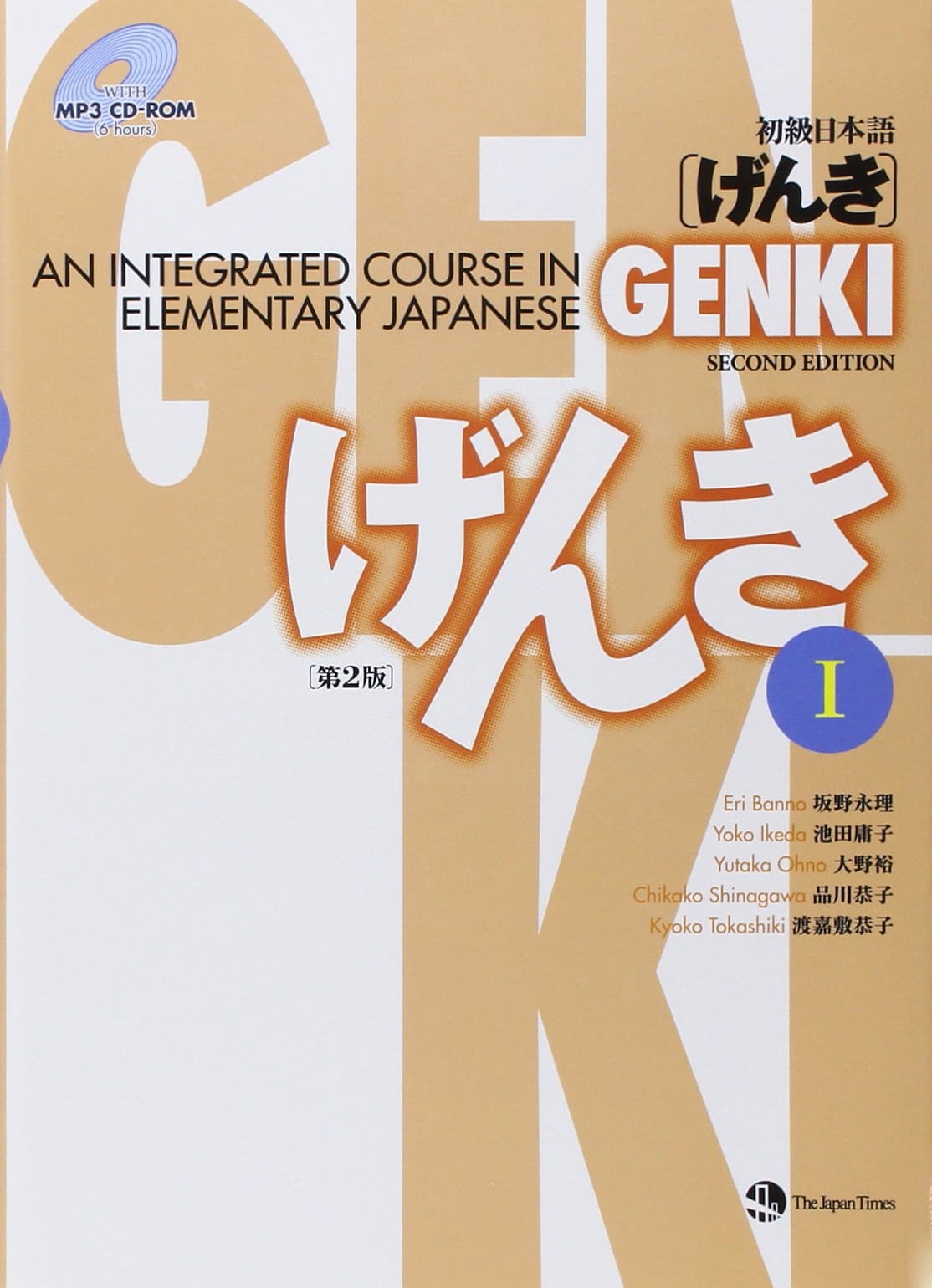
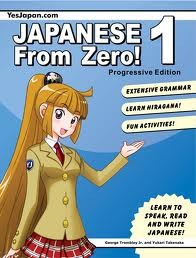


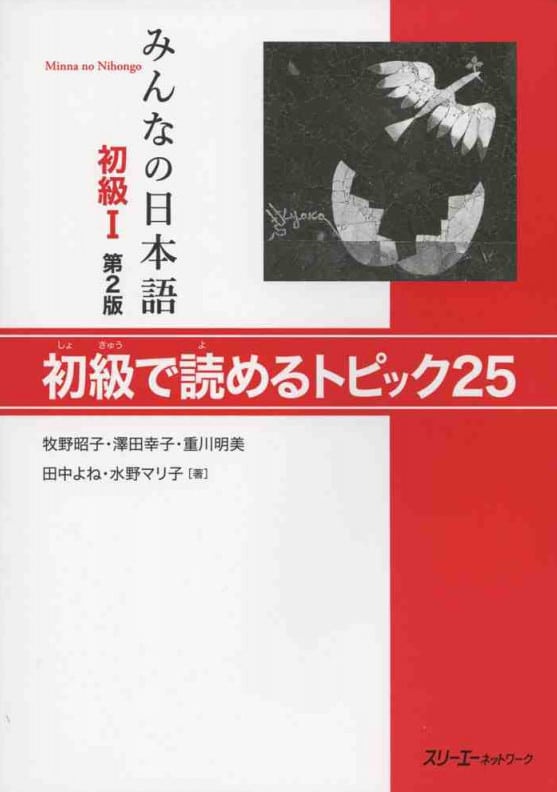
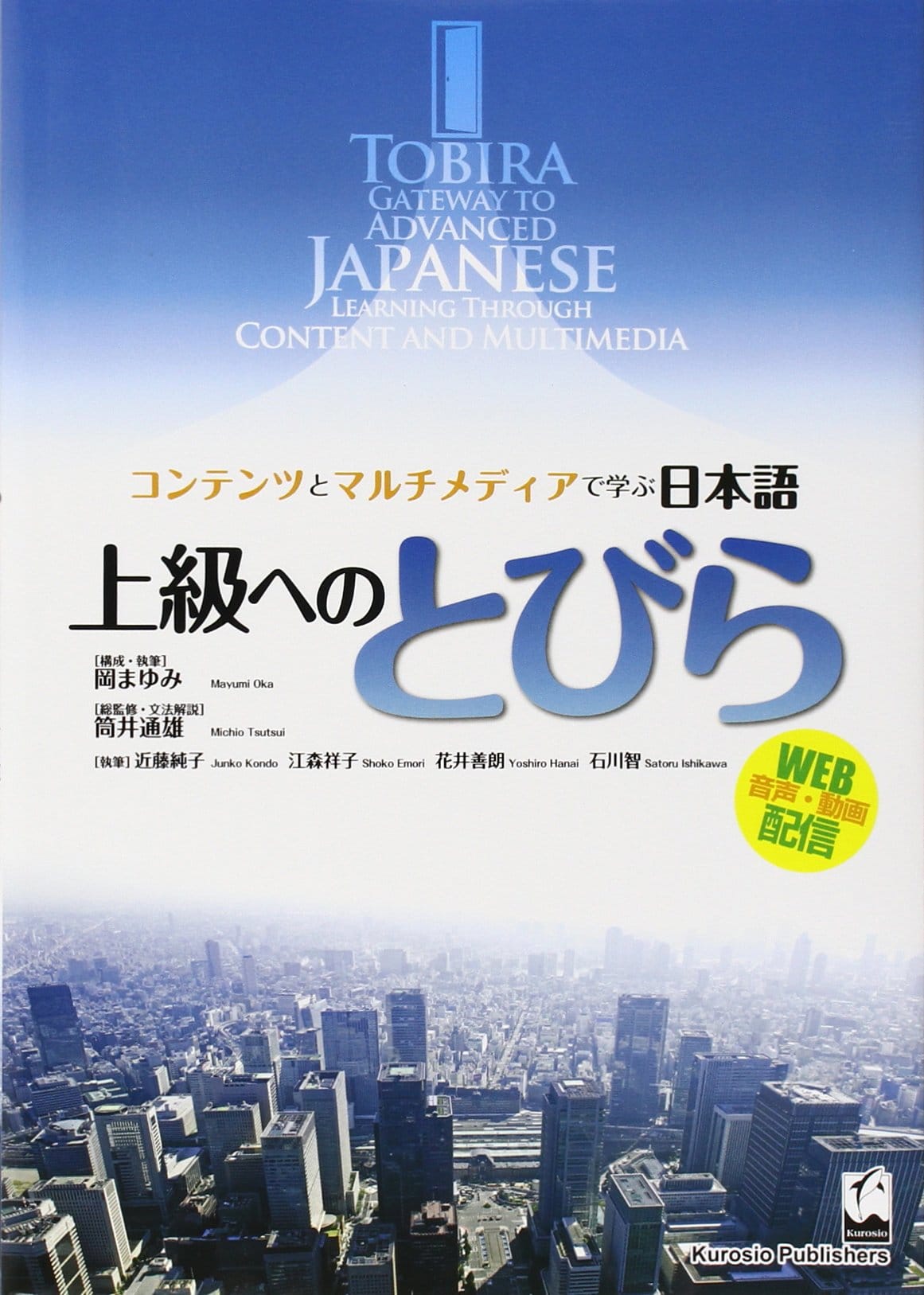
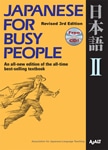
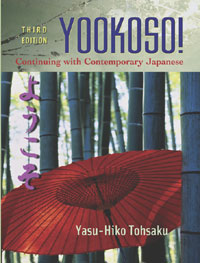
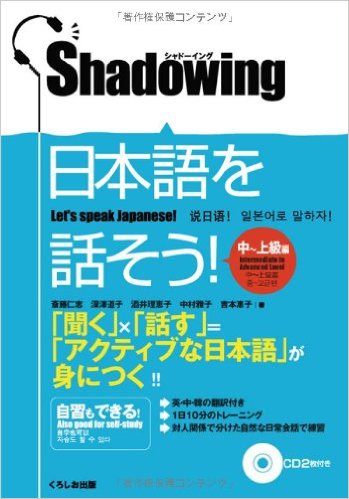
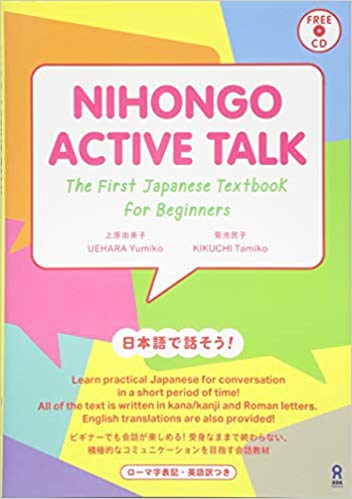
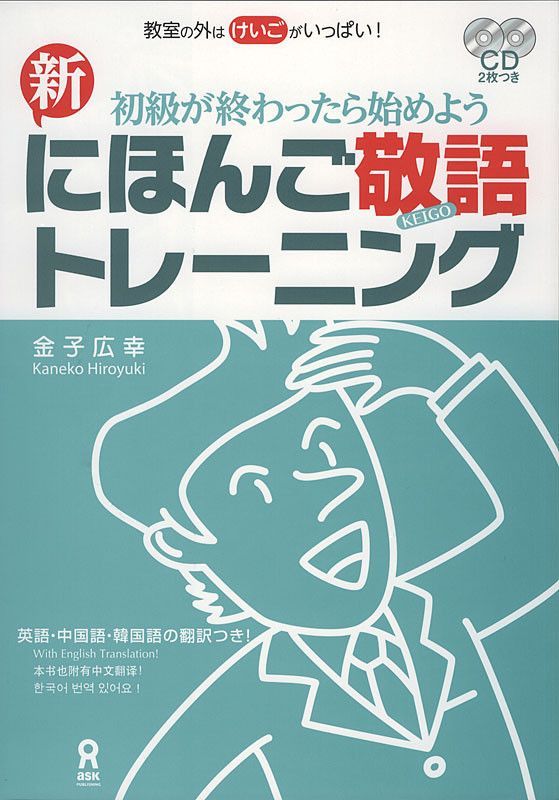





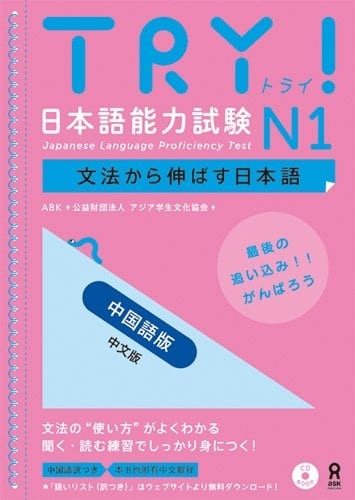







![Common Japanese Collocations: A Learner's Guide to Frequent Word Pairings [Paperback] [2010] (Author) Kakuko Shoji Common Japanese Collocations: A Learner's Guide to Frequent Word Pairings [Paperback] [2010] (Author) Kakuko Shoji](https://m.media-amazon.com/images/I/51vJq4Fap9L._SL500_.jpg)










